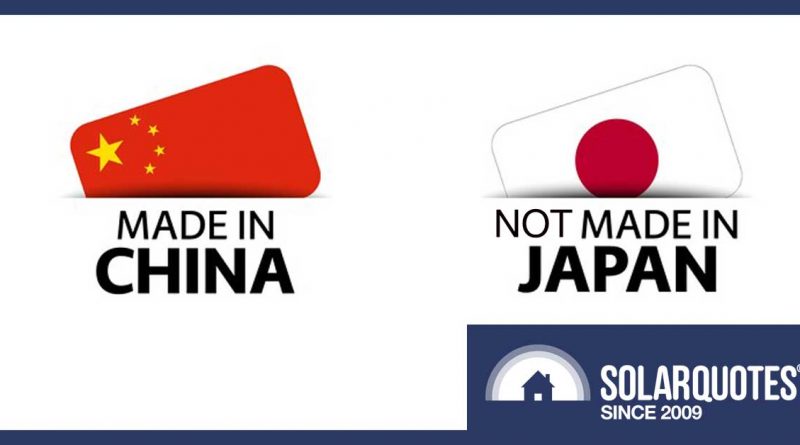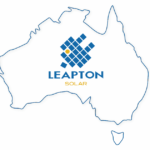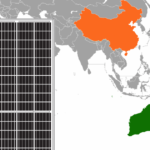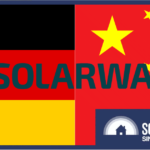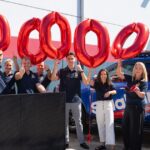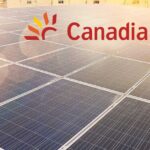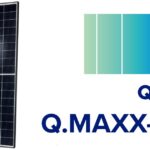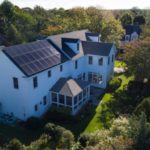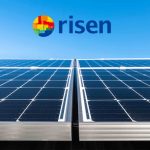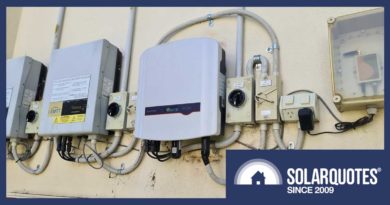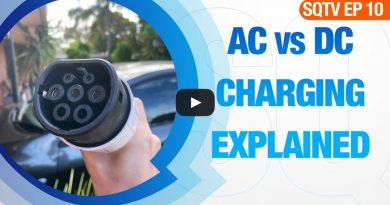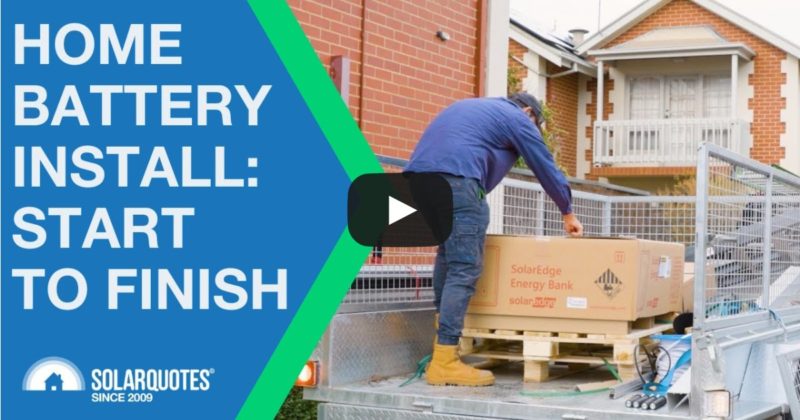Leapton Solar Panels Review: Tier 1 Panels Made In China By Japanese Company
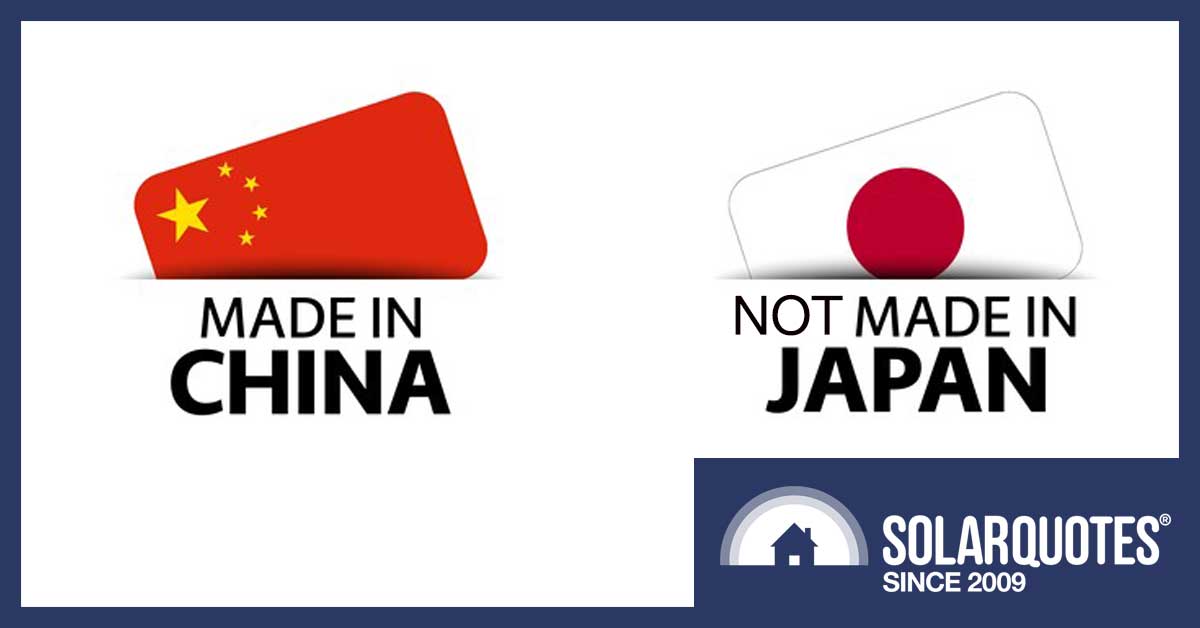
Recently we’ve had a number of calls from Australians who believe Leapton panels are made in Japan. Just to be clear: Leapton solar panels are made in China.
This article is about Leapton Solar panels. Because this company is headquartered in Japan I’d like to give them a big…
Konnichiwa!
But since they’re actually made in China, perhaps that should be…
Ni Hao!
I suppose I could create a hybrid greeting for Leapton Solar, such as “Ni wa” or “Konnichi hao“, but that’s just likely to annoy people.
If you are considering getting Leapton solar panels, the good news is:
- They are tier one.
- They have a 15-year product warranty
- None of the installers I talked to who use them have had a single failed panel so far.
- They are competitively priced.
The drawbacks are:
- They’ve only been installed for under two years in Australia.
- They don’t have an Australian office. This makes the company that imported them responsible for the manufacturer’s warranties.
Last year Leapton shipped around 600 megawatts of solar panels, making them a small tier one producer. They have two panel factories in China and are building a third one there, so we may see more of them in the future.
If you’d like more details, read on.1
What’s In A Name?
I don’t know why they decided to call their company Leapton but, according to their slogan, it might be because they intended to work overseas from the start:

All I can say is, it’s lucky they’re a Japanese company because “Leap from China to the world” wouldn’t sound too auspicious at the moment.
I have no idea what the logo is supposed to be. It looks as though it was designed during a bit shortage and appears to be an off-kilter space invader.
Company Locations
Leapton Energy co. ltd. was founded in 2012 in Kobe Japan and in the same year began operating in China. Kobe is famous for giving cows beer and massaging them to make Kobe beef. It is also a fashion centre that is considered second only to Paris — but generally only by Japanese people. Those old enough to have played the first Pokemon as a child may recall it was hit by a disastrous earthquake in 1995.
Most of the stereotypes we have about Japan come from the Kanto region, which contains Tokyo, but Kobe is located lower down in Japan’s Kinki region. But while Kanto usually dominates the popular imagination, there are still many who consider the whole of Japan to be Kinki. The Kinki area is also known as Kansai.

Kanto person on the left. Kansai person on right. The Kanto person wears a suit and tie while the more laid back Kansai person does not. The Kansai person has darker skin due to a sunnier climate and occasionally going outside. The Kanto person speaks the kind of Japanese you learn in school while the Kansai person speaks the kind of Japanese that makes you cry if you learned Japanese in school. Both have huge eyes and ears to allow them to detect Godzilla and other monsters at great distances.
Leapton Solar opened a Chinese factory in 2015 in Jiangyin city in Jiangsu Province. It’s able to produce up to 300 megawatts of solar panels a year. As far as I can tell, in the three years they existed before they started making stuff, Leapton acted as a project manager for solar farm construction.
The next year they opened a Chinese factory to make solar racking. I haven’t heard of it being used in Australia.
In 2017 Leapton built a second solar panel factory in Changshu, Jiangsu with 250-300 megawatts of annual capacity. According to the company website, it has the most advanced automated production line in the world. It must be truly amazing and capable of being in several locations at once, because multiple panel manufacturers claim to have the most advanced production line in the world. I suspect that, in reality, whoever has the newest large production line probably has the most advanced one.
Leapton also apparently makes solar inverters, but I couldn’t find any claim of a dedicated Leapton factory for them, so I doubt they’ll turn up in Australia any time soon.
Japanese Style Production
If you go to the Leapton Solar website you’ll see that while they don’t hide the fact they manufacture in China, they really emphasize that they’re a Japanese company. For example, this is one of the images that flashes up on their homepage:
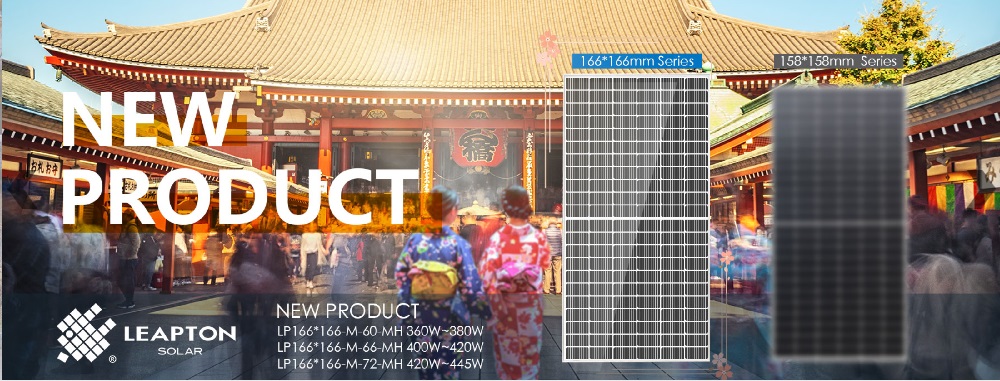
As you can see, the panel on the right uses advanced new blur technology to increase its use of indirect light.
As anyone who has a photographic memory for Japanese temples can tell you, that’s not located in Kobe or the Kinki/Kansai region at all. It’s actually Senso-ji, one of the oldest temples in Japan and located in Tokyo. It has nothing to do with Kobe and is clearly only there because they wanted the site to look ultra-Japanese.
It’s hard to describe how weird this is. It’s like a Melbourne company deciding to use a picture of the Sydney Harbour Bridge to promote themselves. Other images Leapton Solar uses include Mt Fuji, which is located deep in the Japanese stereotype region of Kanto, and the Nara feral deer autonomous zone, which is at least has the benefit of only being one hour’s drive from Kobe.

Do not trust it! It wants to eat your grains!
But we can’t really blame them for trying to associate their product with Japan. Australian companies do the same whenever they use unrelated pictures of kangaroos, Uluru, a didgeridoo, or a dog called Blue. What really matters is — do Leapton solar panels have the high-quality engineering we associate with Japan?
After an exhaustive, frame-by-frame analysis of a Leapton Solar Youtube video of their newest Chinese production line, I have discovered the following:

Using a stick to keep you focused on the task you are doing, and so everyone else can see you are focused on the task you are doing, is very Japanese. You could say it helps them stick to it. They are clearly proud of their stick, as it shows up on average once every 48 seconds in the video. If you want to see the whole thing, here it is:
They have an older video but I can’t recommend it, as the stick only shows up once every 57 seconds.
While some may not regard the presence of the stick as definitive proof Japanese manufacturing culture has been successfully transplanted to China, it’s the best I can come up with from these videos. But cultural exchange is a two-way street and I would say that judging by the blurred panel in the temple image above and the broken warranty link I mention below, Leapton Solar has successfully adopted some elements of Chinese web design, while — regrettably — leaving out the hilarious English.
Tier One Solar Panels
Leapton solar panels are tier one, which means large financial organizations consider them reliable enough to bankroll solar farms that use them. It’s not a direct measure of quality, as the financial health of the company is a major consideration, but it’s not possible to become tier one while producing crap panels so it is a useful indicator of quality.
Warranties
Leapton panels have a 15-year product warranty and a 25-year performance warranty. Overseas the product warranty is often more important because the wording of the performance warranties is usually crap. However, in my opinion, Australian Consumer Guarantees mean that every panel with a 25-year product warranty has to be supported for that long, regardless of what the warranty small print may say. But note I am not a lawyer, so that’s not a professional opinion. It’s just my goddamned opinion.
In the recent past, I would have said a low-cost tier one panel having a 15-year product warranty was excellent. But product warranties have been improving all over the place, so now I’ll just say it’s very good. I like long product warranties because I think they probably reflect how confident a manufacturer really is in the reliability of their panels.
The performance warranty promises they will have a minimum of 80.7% of their original output after 25 years. While this isn’t bad, it is around the minimum for tier-one solar panels these days.
Here is a link to their warranty document that works.
No Australian Office
Leapton Solar does not have an Australian office. This means the company that imports them into the country is responsible for the manufacturer’s warranties. If this importer goes bust then the manufacturer’s warranties disappear. While it is possible for the importer to make an agreement with the manufacturer where the manufacturer promises to provide warranty support, if the importer goes bust that agreement may not mean anything.
This means that if you get Leapton panels it’s very important to find out who the importer is. It’s also very important to write it down because you’re not likely to remember if you need to make a warranty claim in 14 years time.
Half Cut Solar Panels
While Leapton Solar used to make panels with full cells, as is common these days they have transitioned to only making panels with half-cut cells. This has become popular because, while it only results in a small increase in efficiency, robots can perform the extra work required at little additional cost while — most importantly — maintaining panel reliability despite doubling the number of connections required.
This change is a little confusing because a standard-sized residential panel now uses 60 full cells but has 120 half cells. Here is a picture of what Leapton’s 60 cell, monocrystalline, half-cut solar panels look like:
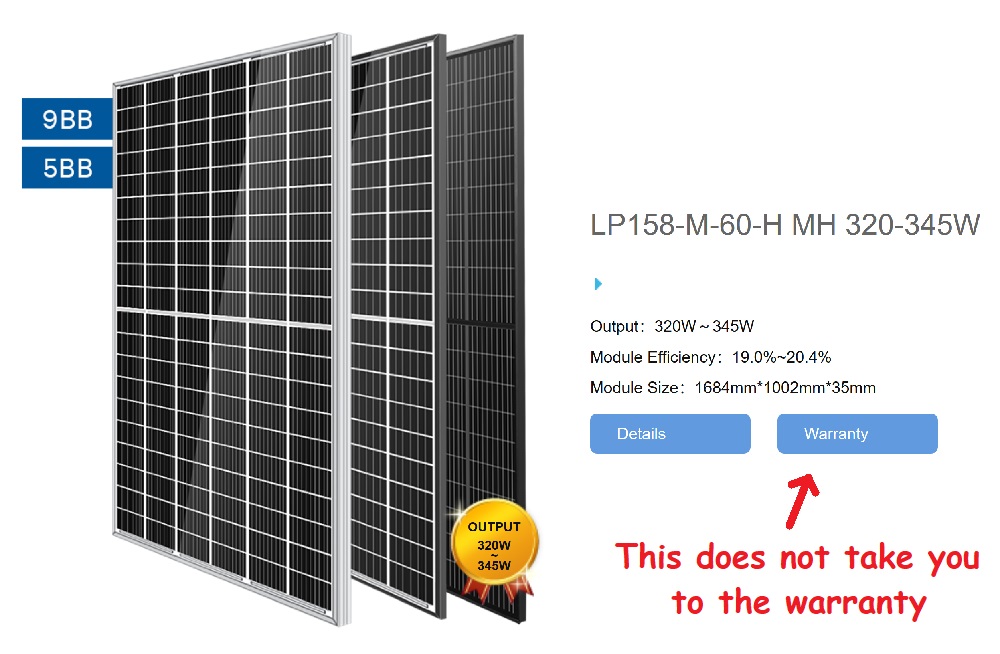
I have pointed out in red the button that does not take you to the warranty when you click on it, which is a bit of a worry. These panels are just a few centimetres longer than the usual 164 to 165-centimetre length of a standard 60 cell panel.
Rooftop solar generally uses the standard size 60 cell panels rather than the larger and more cumbersome 72 cell panels. But half cut cell technology has made it easy to produce an in-between size that uses 66 full cells to make 132 half cut cells:
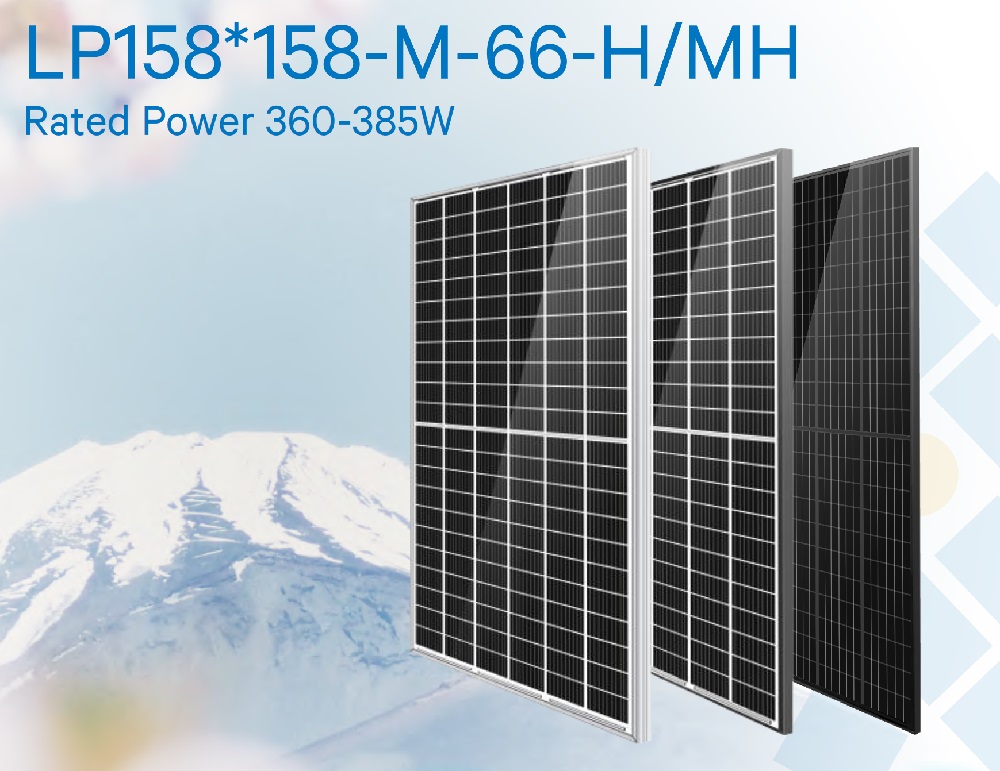
Leapton 66 cell panels with 132 half cells.
It will have to be seen if this size becomes popular for roofs, but installers should beware of advertising that boasts about their high wattage while leaving out they are larger and heavier than standard size solar panels.
Polysilicon And Monosilicon
Leapton produces both polysilicon and monosilicon solar panels, but you’re more likely to see monosilicon ones here. Monosilicon panels are slightly more efficient, which is useful when a household wants to make the most of limited roof space. Their monosilicon panels also suffer slightly less decline in output due to temperature. This is measured by their Temperature Coefficient of Pmax, which is the percentage decrease in output per degree increase in panel temperature above 25 degrees Celsius. The lower this figure the better. For their 60 cell panels it is:
- Polycrystalline: -0.41% per degree Celsius
- Monocrystalline: -0.36% per degree Celsius
A Temperature Coefficient of Pmax of around -0.4% per degree is fairly typical.
LeTID Degradation Unlikely
Leapton panels are PERC, which means they can potentially suffer from LeTID or Light and elevated Temperature Induced Degradation. But because the solar industry appears to have gotten on top of this problem, I think it’s very unlikely this kind of deterioration will cause them to fall below the minimum output their performance warranty allows. However, if you want to be 100% certain your panels won’t suffer from LeTID, the only way to be sure is not to buy PERC panels.
Definitely Not A Crap Panel
Leapton solar panels are definitely not crap. If they’re on your roof you probably have little to worry about. My main concern is — due to not having an Australian office — the importer is responsible for the manufacturer’s warranties. While there is no way to be certain a tier-one manufacturer will be around long term and so be able to honour their warranties, most of us will have even less of a clue if an importer is likely to be around long term.
Another issue is these panels have not been installed in Australia for long. Leapton Solar panels were first approved by the Clean Energy Council in October 2018. While I haven’t heard of any problems yet, if it takes a few years for them to develop under Australian conditions we’d have no way of knowing about it yet. While I think it’s unlikely they will develop problems, it is a possibility.
In my opinion, you would be far better off with Leapton panels than with no name panels. If Leapton Solar’s low cost allows you to avoid installing crap or allows you to afford a larger solar power system, they could be well worth it. But if it’s within your budget I suggest you consider paying a small premium for well-supported solar panels, that have been sold in Australia for a long time and have an Australian office.
Oh, and avoid any solar salespeople running around claiming (or implying) Leapton Solar panels are made in Japan. There is nothing wrong with a Japanese company making panels in China, but there’s everything wrong with lying to get a sale.
Footnotes
- If you wouldn’t like more details but are really bored and a bit puerile, then read on anyway but mentally substitute the words “my farts” whenever you see the phrase “Leapton panels”. ↩
Original Source: https://www.solarquotes.com.au/blog/leapton-solar-panels-review/

